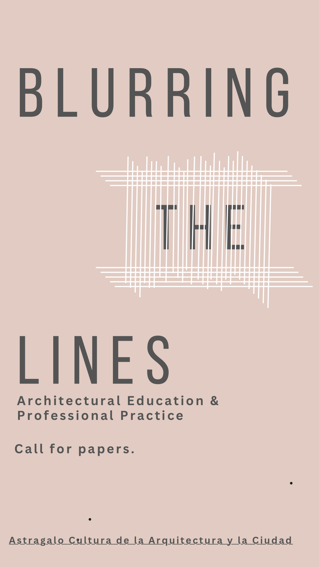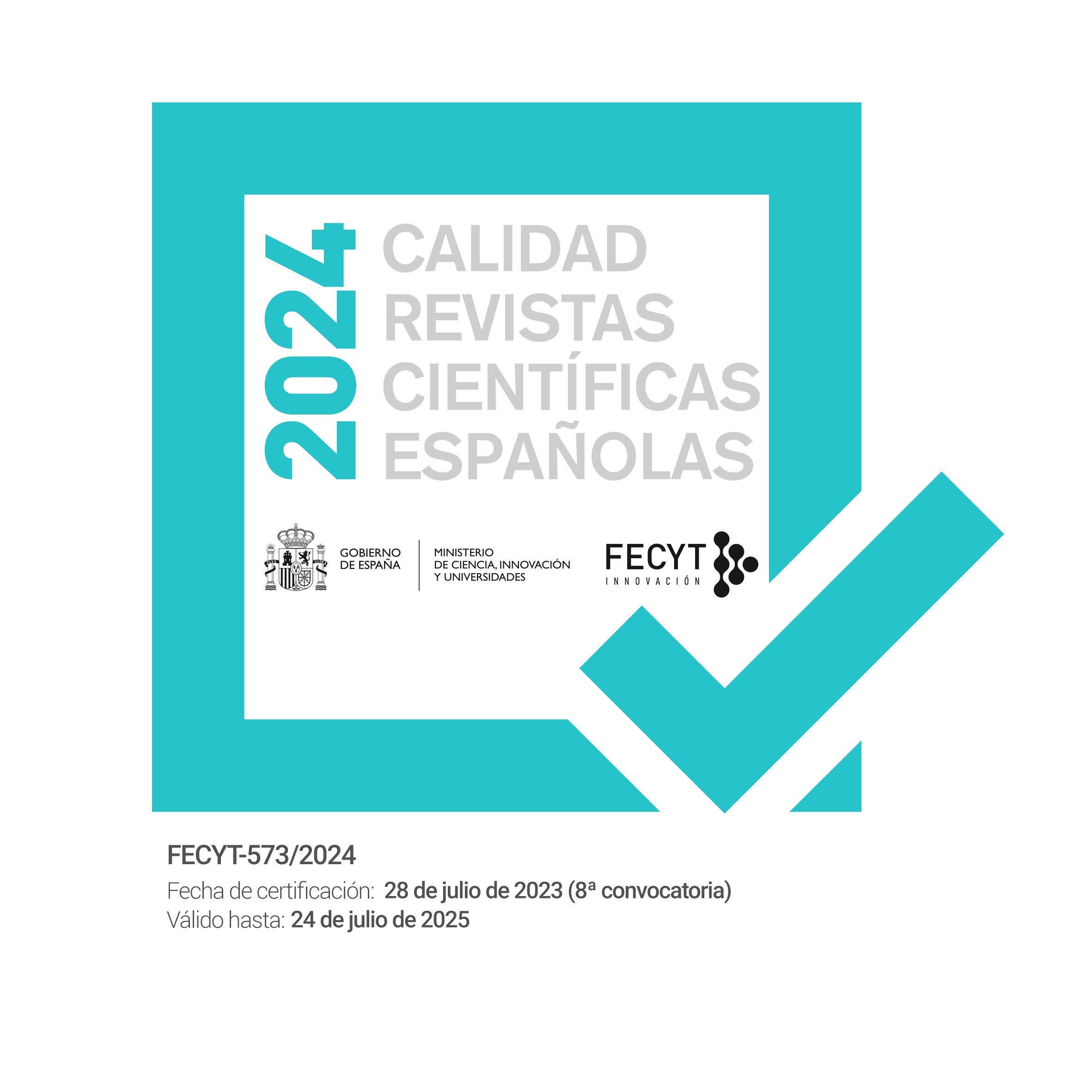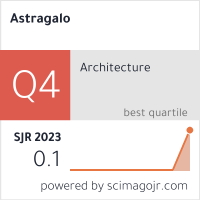Astrágalo anuncia dos nuevos llamamientos para la recepción de artículos: A39 (EXTRA) (2025) DOBLE COLAPSO: ECOSISTÉMICO Y HUMANISTA. y A40 (2025) DESDIBUJANDO LAS FRONTERAS | EXPLORANDO LAS INTERSECCIONES ENTRE LA FORMACIÓN ARQUITECTÓNICA Y LA PRÁCTICA
A39 (EXTRA) (2025) DOBLE COLAPSO: ECOSISTÉMICO Y HUMANISTA.
Editores invitados:
Manoel Rodrigues Alves, Instituto de Arquitetura e Urbanismo, Universidade de São Paulo, Brasil
Julio Arroyo, Universidad Nacional del Litoral, Santa Fe, Argentina
Envíos hasta el 30 de mayo de 2025
Revisión por pares hasta el 30 de julio de 2025
Publicación en octubre de 2025
Para los coetáneos de los primeros 25 años del Siglo XXI, la contemporaneidad, entendida como condición histórica y pauta cultural, reformula problemáticas e introduce nuevos temas de estudio, condicionando la revisión de procedimientos y marcos teóricos aparentemente consolidados. La consciencia de vivir en nuevas eras, como las del antropoceno y lo digital, abre hipótesis de transición hacia un mundo post humano en el que la ciudad y el territorio, el espacio público y las prácticas sociales, la arquitectura y la estética de la vida cotidiana se enfrentan como el final de un ciclo histórico, dando lugar a un estado diferente. José Luis Pardo (2011) sostiene que en razón del cambio civilizatorio que atravesamos, estamos instalados en una permanente transición de paradigmas: ¿es así en el Sur Global?
El sentido que ha tomado el desarrollo de la técnica desde la modernidad afecta a distintos campos disciplinarios, como el de la Arquitectura y del Urbanismo, que se han constituido en una suerte de saberes absolutos sobre los modos de habitar la Tierra, considerada como un recurso disponible a ser instrumentalizado con la consecuente desaparición de biomas y la degradación de paisajes. Los territorios urbanos, las ciudades, se han transformado en dispositivos de alto impacto ambiental. Ser coetaneos de estos cambios supone atender conceptos como Antropoceno, Capitaloceno o Chthuluceno que, por su amplitud, expresan la multicausalidad de los procesos que afectan al planeta en su conjunto, abriendo la posibilidad de desarrollar una nueva ética en la relación entre humanidad y naturaleza.
Asimismo, el afianzamiento de la era digital promueve la lógica informacional en todos los órdenes de la existencia, facilita una conectividad compulsiva entre individuos monádicos (Sadin, 2020) y expande la aplicación de inteligencia artificial, dando lugar a fenómenos de crisis que trascienden límites nacionales y desafían el poder de los Estados. Emergen realidades en las que los sujetos desarrollan, por imperativo de época, nuevas sensibilidades y capacidades cognitivas que alteran la noción de espacio y tiempo. El locus urbano como factor de estabilidad en el espacio y duración en el tiempo, cede frente a la volatilidad e instantaneidad de lo digital, modificando las prácticas colectivas en el espacio público urbano.
Las ciudades (del Sur Global), caracterizadas por sus múltiples temporalidades y espacialidades, que en sí mismas pueden explicarse por su complejidad histórica, se enfrentan a la necesidad de procesar nuevas externalidades propias de sus singularidades y de la mundialización política, económica y cultural. De tal modo, la cuestión de nuestros tiempos, del antropoceno y lo digital, constituye un epifenómeno que introduce nuevos parámetros para pensar la ciudad como palimpsesto de significados, elementos materiales y prácticas sociales.
¿Se trata de mundos en ruinas que se instauran? ¿Mundos humanos y no humanos producidos a partir de una lógica de fugacidad e instantaneidad, de tiempos efímeros y espacios amnésicos (A. F. Carlos), de olvidos y sustituciones? En esta nueva era, la separación entre Naturaleza y Cultura, como así también entre sujeto y sociedad es insostenible y exige ensayar nuevas perspectivas y abordajes para enfrentar dualismos, colonialismo y hegemonía propios del mundo occidental.
Partiendo de que la ciudad actual es expresión del poder del capitalismo globalizado, y de que se produce um desplazamiento desde la tríada ciudad-trabajo-política hacia ciudad-gerenciamiento-negocio, potenciada ello por la presencia disruptiva de la tecnologia, planteamos las siguientes preguntas:
- ¿Cuáles son las posibilidades y limitaciones del Sur frente a la complejidad de las tendencias contemporáneas que suponen una significativa transformación civilizatoria?
- ¿Constituyen estas tendencias nuevas amenazas o nuevas oportunidades para sociedades marcadas por agudas desigualdades?
- ¿En qué medida el Sur Global propone una epistemología situada, adecuada para enfrentar los desafíos del momento coetáneo?
- ¿Qué surge como desarrollo de esta epistemología en relación con los valores, elementos y procedimientos de las disciplinas proyectuales como la Arquitectura y el Urbanismo?
Convocamos a pensar alternativa y críticamente sobre los procesos materiales y simbólicos de nuestras ciudades y territorios a través de la presentación de casos, reflexiones o registros que den cuenta de cómo estas tendencias se procesan en el Sur Global, en un tiempo que se vive como causa y consecuencia de un hipotético doble apocalipsis: el del colapso ambiental y de lo humano.
CARLOS, Ana Fani. O Espaço Urbano. Novos escritos sobre a cidade. São Paulo, FFLCH-LGU, 2007.
PARDO, José Luis. Disculpen las molestias, estamos transitando hacia un nuevo paradigma. En Arena, L. y Fogué, U. Planos de (inter)sección. Materiales para un diálogo entre filosofía y arquitectura. Lampreave, 2011.
SADIN, Eric. La Inteligencia artificial o el desafío del siglo. Anatomía de un antihumanismo radical. Buenos Aires, Caja Negra, 2020.
------
A40 (2025) DESDIBUJANDO LAS FRONTERAS | EXPLORANDO LAS INTERSECCIONES ENTRE LA FORMACIÓN ARQUITECTÓNICA Y LA PRÁCTICA PROFESIONAL
Editoras invitadas:
Victoria Farrow Arquitecta. Facultad de Arquitectura de Leicester, Universidad De Monfort
Alona Martínez Pérez. Arquitecta. Escuela de Arquitectura de Leicester, Universidad De Monfort
Envíos hasta el 30 de mayo de 2025Revisión por pares hasta el 20 de julio de 2025
Publicación en septiembre de 2025

^El mundo real.
^Preparados para la Práctica.
^Preparados para el puesto.
Todas estas son frases comunes que se utilizan en la educación arquitectónica cuando describimos la preparación de los graduados para completar su título y también cuando conversamos con los profesionales sobre las expectativas de la industria. Por supuesto, es importante que los graduados salgan de la educación superior listos para trabajar y que tengan la confianza para participar en las tareas de la oficina. Si bien no es el único objetivo de la educación arquitectónica, el objetivo principal idealmente debería ser la empleabilidad, pero ¿qué otros componentes son importantes a la hora de formar a los arquitectos del futuro?
Cuando se habla de la universidad con los grupos de educadores de 16 a 18 años, un tema común suele ser si un estudiante está listo para la universidad. ¿Su educación anterior los ha preparado lo suficiente para dar el siguiente paso hacia la educación superior? ¿Qué preparación se ha realizado para explorar esta intersección y se ha brindado el apoyo adecuado para crear una trayectoria exitosa? Este tema de la preparación también es un tema común entre los educadores de pregrado, ya que analizamos si la formación académica de un estudiante lo ha preparado para sentirse lo suficientemente preparado para la educación en arquitectura. Durante décadas, también ha sido común interrogar sobre las intersecciones que se producen entre los niveles educativos en la escuela de arquitectura. Al hacerlo, la práctica y la comprensión pedagógicas han evolucionado para crear métodos de enseñanza y proyectos que sean apropiados para el nivel "ahora" cuando se reciben los estudiantes entrantes, pero también para el futuro. A través de este elemento de planificación anticipada, los educadores apuntan a garantizar que los estudiantes de la educación arquitectónica y los campos de diseño relacionados ingresen a la práctica profesional con el conocimiento adecuado y un conjunto de herramientas para desempeñarse con éxito.
Una pregunta que quizás se hace con menos frecuencia sería: ¿están las prácticas y la industria “ preparadas” para nuestros estudiantes y qué reflexiones se están produciendo dentro de la industria en términos de tutoría que respondan al mundo en constante cambio y, a su vez, a la formación arquitectónica?
Esta particular intersección entre la educación superior y la práctica profesional ha sido motivo de debate durante muchas décadas. Con la profesión en constante evolución y cambio para adaptarse a nuestra sociedad y clima cambiantes, uno podría preguntarse si es posible formar a los graduados para que estén "preparados" para el mundo real. En la misma línea, la educación arquitectónica sigue enfrentándose a presiones para satisfacer las necesidades de nuestros estudiantes entrantes, quienes, año tras año, también están cambiando en términos de sus necesidades, aspiraciones y habilidades. Los estudiantes de hoy se incorporan a la educación arquitectónica expertos y altamente capacitados en tecnologías y software que los estudiantes de hace una década no eran. También son mucho más conscientes de los desafíos que presenta la crisis climática; lidian con la crisis financiera que está afectando y están familiarizados con la necesidad de una mayor conciencia de la igualdad, la diversidad y la inclusión. Como tal, es necesario que la educación arquitectónica se adapte y se adapte a estos nuevos tipos de estudiantes para crear nuevos planes de estudio reflexivos que aborden temas como la inclusión; IA, BIM y nuevos materiales (por mencionar algunos), así como para encontrar nuevos métodos pedagógicos para impartir contenido. A medida que la educación arquitectónica va ajustando la etapa inicial de la formación de los arquitectos, ¿cómo están reaccionando los estudios a los cambios en nuestros graduados? ¿Qué conversaciones se están dando dentro de la profesión y dentro de la educación arquitectónica sobre esta encrucijada después de la graduación y cómo se está abordando?
En ambos lados de esta encrucijada crítica, tanto en la formación como en la profesión de arquitectura, se han producido cambios forzados como resultado de la pandemia y la crisis climática. Del mismo modo, las noticias sobre arquitectura han puesto de relieve el maltrato, el acoso, los bajos salarios, la misoginia y otros fenómenos peores que se producen en el ámbito interno. Los cambios que se avecinan en la formación universitaria de arquitectos también plantean nuevos desafíos que deben abordarse. Por tanto, este resumen plantea la cuestión de cómo debería ser la formación de arquitectos futuros y cómo debería abordarse la intersección entre ambas a medida que avanzamos. ¿Cómo nos preparamos para un futuro desconocido?
Este resumen invita a académicos, investigadores y estudiantes a dar ejemplos de proyectos y pedagogías que se utilizan para preparar a los estudiantes para la profesión y a discutir cómo nuestro trabajo dentro de la educación arquitectónica está equipando a los estudiantes con las habilidades y el conocimiento necesarios para la oficina. El resumen también invita a los profesionales, que pueden o no estar en la línea divisoria entre la educación y la práctica, a presentar trabajos que discutan cómo la industria está evolucionando para prepararse para recibir a los nuevos graduados y cómo la profesión está trabajando para adaptarse a los cambios que ocurren dentro de la educación arquitectónica.
Los artículos que respondan a este resumen deben tomar posición, en primer lugar, sobre qué se entiende por “listo para la práctica” y “el mundo real”. También será necesario declarar una posición como educador, practicante o ambos.














